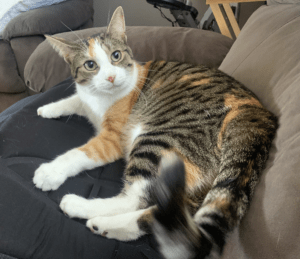Frequencies of Genetic Disease Mutations by Cat Breed
A knowledge and understanding of mutation frequencies for genetic diseases found within and between cat breeds is a prerequisite for conscientious breeders and veterinarians wishing to make sustainable breeding and informed medical decisions.
Unfortunately, information on mutation frequency is limited and not always readily accessible within the public domain. This page, “Frequencies of Genetic Disease Mutations by Cat Breed” is an attempt to address this issue.
Two sets of mutation frequency data for cats are presented, compiled by cat breed and by genetic disease. These data sets are as follows:
Labgenvet data: In 12 years of operation, the Laboratory of Veterinary Genetics (Labgenvet) was able to perform over 1,000 tests for cat genetic diseases and traits, with samples derived almost exclusively from purebred animals.
About two thirds of the samples processed were submitted by cat breeders while one third of the samples came from veterinary clinics.
Samples represented cats mainly (but not exclusively) from Quebec and Eastern Canada.
Samples were processed for the specific disease mutation requested using techniques of PCR amplification and DNA sequencing. The frequency results presented are inclusive to June 1, 2021.
Data from Anderson et al. (2022): This published data set represents over 11,000 samples from purebred and domestic cats. Each sample was profiled for 50 known mutation varients associated with feline genetic diseases. Testing was by hybridization of sample DNA on a custom designed DNA chip microarray. Samples represented predominantly North American and European cats but also cats from other countries. Results are inclusive to 2021.
For both data sets, results are presented by cat breed, by disease, by number of samples processed and by percentage of samples recorded as:
N/N homozygous normal (clear) – not at risk of developing the disease.
M/N heterozygous (carrier) – for recessive mutations, not at risk of developing the disease; for dominant mutations, at risk of developing the disease.
M/M homozygous (double) mutant – at risk of developing the disease for both recessive and dominant mutations.



